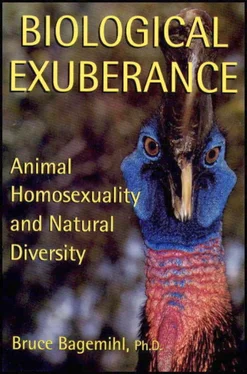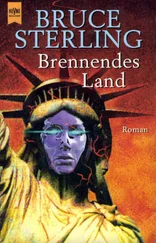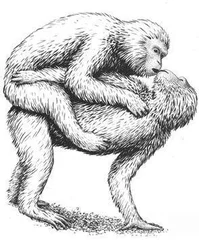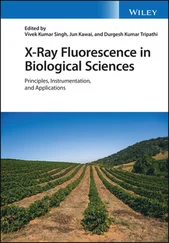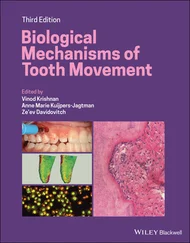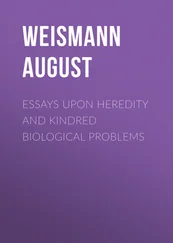In this chapter we introduce the concept of Biological Exuberance, which synthesizes these two major strands of thought (indigenous and “modern”) into a new way of viewing the natural world. This view is at once consistent with many orthodox ideas about evolution and biology while simultaneously offering a radical shift in perspective. Traditionally, scarcity and functionality have been considered the primary agents of biological change. The essence of Biological Exuberance is that natural systems are driven as much by abundance and excess as they are by limitation and practicality. Seen in this light, homosexuality and nonreproductive heterosexuality are “expected” occurrences—they are one manifestation of an overall “extravagance” of biological systems that has many other expressions.
Left-Handed Bears and Androgynous Cassowaries: Informing Biology with Indigenous Knowledge
To Western science, homosexuality (both animal and human) is an anomaly, an unexpected behavior that above all requires some sort of “explanation” or “cause” or “rationale.” In contrast, to many indigenous cultures around the world, homosexuality and transgender are a routine and expected occurrence in both the human and animal worlds. The sporadic attention devoted to animal homosexuality/transgender by Western science spans a little over two centuries, while aboriginal cultures have accumulated a vast storehouse of knowledge about the natural world—including the sexual and gender systems of animals—over thousands of years. It stands to reason, then, that Western science might be able to learn something from indigenous sources. In this section we’ll explore some traditional tribal beliefs about animal (and human) homosexuality/transgender from around the world and examine the ways in which these ideas are relevant to contemporary scientific inquiry.
Aboriginal Views of Animal Homosexuality and Transgender
Ideas about animal (and human) homosexuality/transgender figure prominently in three cultural complexes on different continents: native North America, the tribes of New Guinea/Melanesia, and indigenous Siberian/Arctic peoples. Beliefs about sexual and gender variability in animals recur systematically throughout many of the cultures in each of these areas and are paralleled by a corresponding recognition and valuation of human homosexuality and transgender. Although these are by no means the only cultures in the world where such beliefs exist, a relatively extensive body of anthropological research has documented the indigenous views on this subject particularly well for these regions. These cultures offer a useful introduction to aboriginal systems of knowledge concerning gender and sexuality and may be taken as representative of the sorts of worldviews that are likely to be encountered in other indigenous cultures. 2Moreover, the forms that such beliefs take show striking similarities in each of these regions. Aboriginal ideas about animal homosexuality and transgender are encoded in four principal cultural forms: totemic or symbolic associations of animals with human homosexuality and transgender; beliefs about mutable or nondualistic gender(s) of particular species, often represented in the figure of a powerful cross-gendered animal or in sacred stories (“myths”) about sexual and gender variability in animals; ceremonial reenactments or representations of animal homosexuality and transgender, sometimes combined with ritual reversals of ordinary activities; and animal husbandry practices that encourage and value intersexual and/or nonreproductive creatures. 3
NORTH AMERICA: Two-Spirit, Shape-Shifter, Trickster-Transformer
Most Native American tribes formally recognize—and honor—human homosexuality and transgender in the role of the “two-spirit” person (sometimes formerly known as a berdache). The two-spirit is a sacred man or woman who mixes gender categories by wearing clothes of the opposite or both sexes, doing both male and female (or primarily “opposite-gender”) activities, and often engaging in same-sex relations. As is true for homosexual and/or transgendered individuals in many other indigenous cultures around the world, two-spirit people are frequently shamans, healers, or intermediaries in their communities, performing religious and/or mediating functions (e.g., between the sexes, or between the human, animal, and spirit realms). 4In many Native American cultures, certain animals are also symbolically associated with two-spiritedness, often in the form of creation myths and origin legends relating to the first or “supernatural” two-spirit(s). Among the Oto people, for example, Elk (Wapiti) is described as cross-dressing in several origin legends and is considered the original two-spirit; consequently, two-spirits in this culture always belong to the Elk clan. 5A Zuni creation story relates how the first two-spirits—creatures that were neither male nor female, yet both at the same time—were the twelve offspring of a mythical brother-sister pair. Some of these creatures were human, but one was a bat and another an old buck Deer. 6In “How the Salmon Were Brought to This World,” a Nuxalk (Bella Coola) story that describes the origin of food, the first two-spirit accompanies all the animals (including a Raven, cormorant, crane, osprey, hawk, and mink) on a long canoe journey in their quest for the first salmon. Each of the animals finds a different kind of salmon, while the two-spirit brings back the first berries for people to eat. A mythic journey is also featured in the origin tale of the Kamia (Tipai/Southern Diegueño) people, in which the divine two-spirit and his/her twin sons use the feathers from a number of birds—among them, the crow—to make headdresses. 7Finally, the Mothway origin story of the Navajo relates the adventures of an extraordinary figure known as Be’gochidí. Divine trickster, shape-shifter, world-creator, and two-spirit, Be’gochidí is a blond (or red-haired), blue-eyed god who mediates between animals and humans, men and women, and Navajos and non-Navajos. S/he is also intimately associated with Butterflies: born at the ancestral home of Moths and Butterflies, Be’gochidí is responsible for raising the Butterfly People and frequently indulges in fondling or masturbation of both male and female Butterflies. 8
In other Native American cultures, animal associations with transgender and homosexuality take the form of personal vision quests or totemic creatures linked with two-spirits. Among various Siouan peoples such as the Dakota, Lakota, and Ponca, for example, a man or woman becomes two-spirited if his or her sacred dreaming involves Buffalo (especially a hermaphrodite Buffalo or a white Buffalo calf), or if he or she has a vision of Double-Woman, who often appears in the form of a Black-tailed (Mule) Deer. An Omaha (Sioux) man’s calling to be a two-spirit might be announced by an owl. 9Among the Tsistsistas (Cheyenne), a vision quest involving the thunderbird (typically identified with the golden eagle or Harris’s hawk) destines an individual to become a member of the Contrary Society, a group of men who are (heterosexually) celibate, do everything the opposite way, and sometimes have relations with two-spirit people. Those manifesting sexual and gender variance (contraries and two-spirits) may also be symbolically associated with birds that have orange-red coloration, such as orioles or tanagers, and possibly also with Dragonflies. 10The Arapaho people believe that two-spirit is a blessing bestowed as a supernatural gift from birds or mammals, while Hidatsa two-spirits typically wear Magpie feathers in their hair as part of ceremonial dress. This symbolizes their connection to powerful holy women who are associated with Magpies in this culture. 11In some cases, individual two-spirit shamans may invoke the powers of specific animals, such as a Wolf tutelary for the Tolowa two-spirit shaman Tsoi’tsoi and a Grizzly Bear tutelary for the two-spirit shaman haywíč of the Snoqualmie (Lushootseed/Puget Sound Salish) people. 12
Читать дальше
